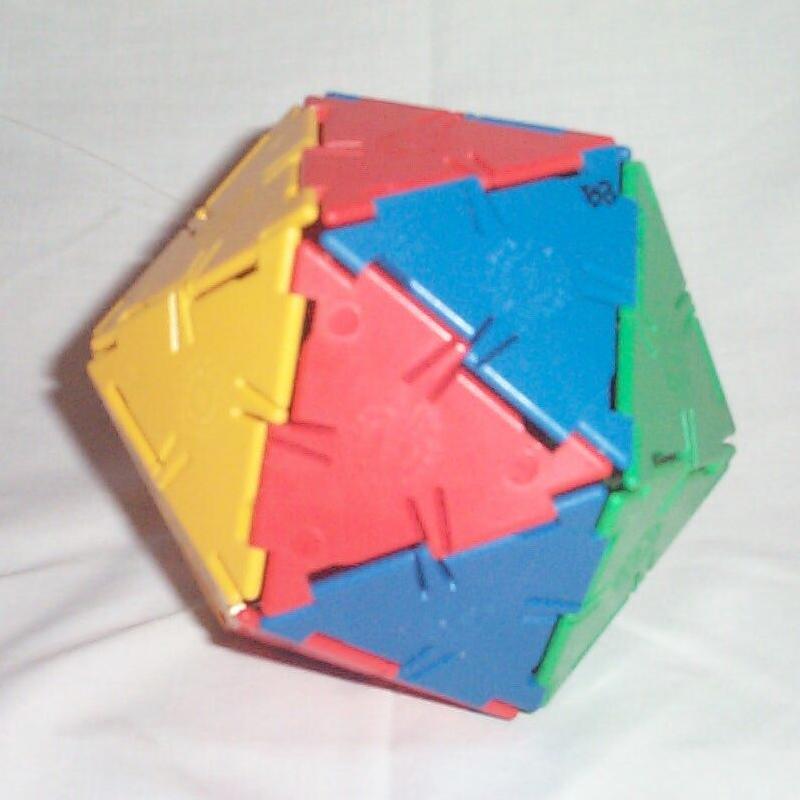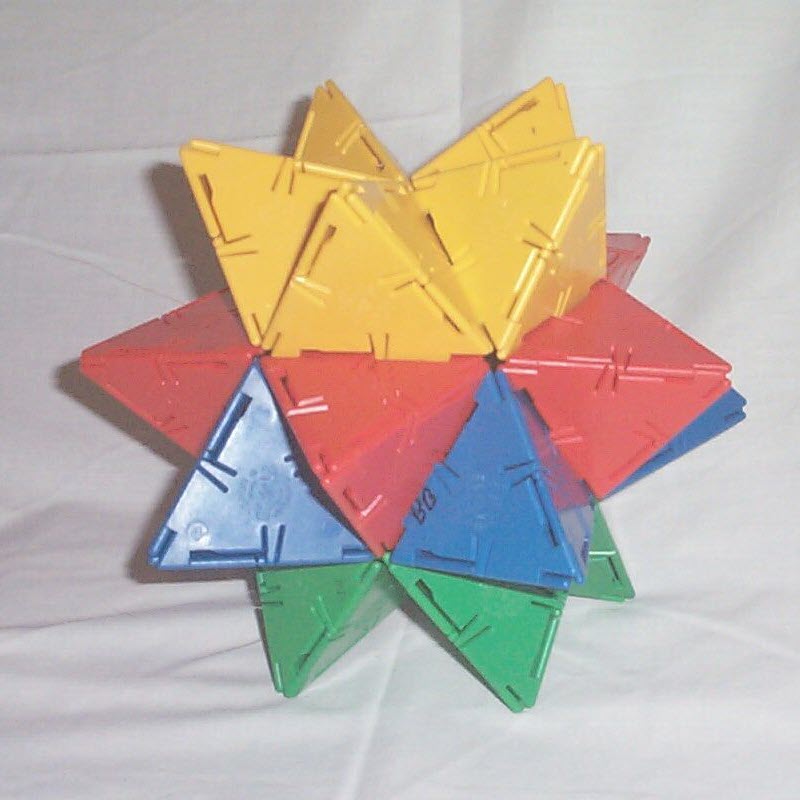

This motivates the students to try more and bigger shapes. They get practice with spacial visualization and systematic counting. (Hint: Don't move the shape, move your head.) Then the instructor begins to work more systematically.
Using the overhead, the instructor leads the class in checking the 3-sided, 4-sided and 5-sided pyramids. Rather than continuing with pyramids with more and more sides, the instructor leads a discussion of the n-sided pyramid. This gets the students to make the conceptual leap form concrete numbers to the algebraic concept of a variable which stands for an arbitrary but specific number. The students study patterns and develop formulas depending on n for the numbers of faces, vertices and edges of an n-pyramid and algebraically combine these to find the Euler number, which comes out to be 2. Thus the students do not need to check any more pyramids.
This algebraic approach can be repeated with prisms and if necessary (and if time permits) with diamonds (bipyramids) and drums (antiprisms).
Next, many of the shapes are formed by cutting off one or more corners from another shape. This operation is called truncation. The instructor can lead a discussion of what happens to the number of faces, vertices and edges and the Euler number when you truncate a vertex. Of course this depends on the number of edges which come together at this edge. However, in all cases, the Euler number does not change.
Next, many of the shapes are made by gluing two shapes together on a triangle or square or other polygon. For example, a house is made by gluing a pyramid on top of a cube, and the stellated shapes are made by gluing pyramids on all the faces of some other shape. This process is called "surgery" or "cut and paste" and is an elementary version of a topic normally covered in a course called algebraic topology for math grad students. (The kids like to know this.) The instructor can take two shapes with Euler number 2 and glue them together on a triangle or square and compute the Euler number of the result. Again the Euler number remains 2. (The discussion with general shapes requires slightly more algebra; namely it is necessary to distribute a minus sign through a parenthesis. This is at the upper end of the ability of many of the students.)
So where do we get a shape with Euler number not 2? Answer: We glue together two shapes on two squares, producing a ring shape with a hole in the center. Such a shape has Euler number 0. Finally, the instructor can ask the students what they think would be the Euler number of a shape with two holes. Many of them correctly guess that it would be -2. This gives them a concrete example of a situation in which a negative number means something more than just "owing some amount."
Between the Platonic solid activity and the Euler activity, the students have made 2 conjectures, proved one and disproved the other.